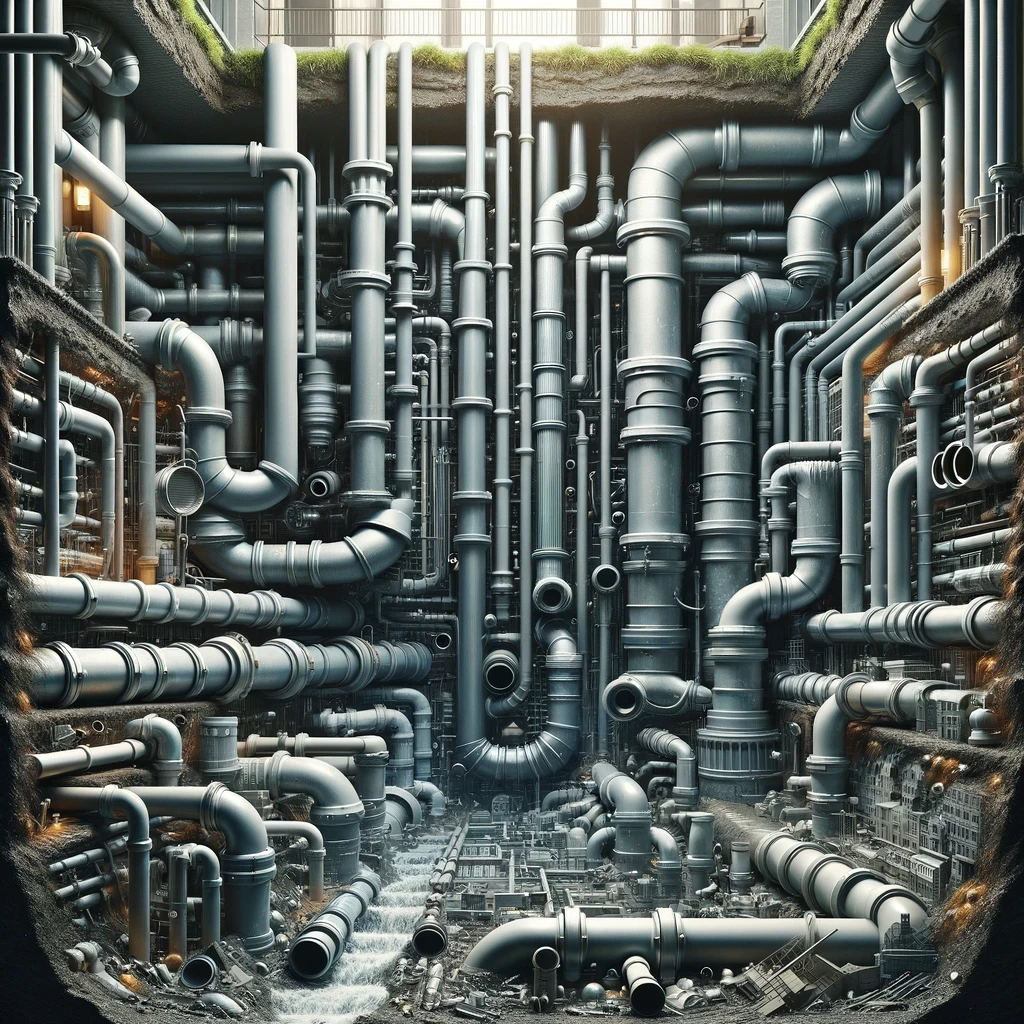In the sprawling metropolises of Dubai, Mumbai, and beyond, the intricate network of drainage systems often hides in the shadows of skyscrapers and bustling streets. Yet, these unassuming systems play a pivotal role in the resilience and sustainability of our cities, particularly in the face of climate change-induced challenges such as storms and flash floods. In recent years, the world has witnessed a surge in extreme weather events, resulting in devastating floods that wreak havoc on urban infrastructure and human lives. The frequency and intensity of these incidents serve as a stark reminder of the urgent need to reevaluate and revamp our drainage systems.
Climate change is not just an environmental issue; it’s a profound disruptor of urban infrastructure. As temperatures rise and precipitation patterns become increasingly erratic, traditional drainage systems designed to handle predictable weather patterns are no longer sufficient. The consequences of inadequate drainage infrastructure extend far beyond inconvenience; they pose a threat to the very survival of our cities.
Shifting Perspectives: From Necessity to Priority
Failure to prioritize the enhancement and modernization of drainage systems could lead to catastrophic consequences: submerged neighborhoods, disrupted essential services, and staggering economic losses. It’s imperative to shift our perspective on drainage systems from mere municipal necessities to critical components of urban resilience and sustainability. Governments and policymakers must recognize the urgency of investing in drainage infrastructure as a fundamental aspect of city planning and development. By viewing drainage systems through this lens, we acknowledge their pivotal role in safeguarding communities against the impacts of climate change.
Only by prioritizing the enhancement and modernization of drainage systems can we build cities that are resilient in the face of evolving environmental challenges. Embracing this shift in perspective entails not only allocating resources but also fostering innovation and collaboration in the design and implementation of sustainable drainage solutions. By integrating drainage infrastructure into broader urban planning efforts, we can create cities that thrive even amidst the uncertainties of a changing climate, ensuring the safety, well-being, and prosperity of present and future generations.
Innovating for Resilience: Towards Sustainable Solutions
Investing in drainage systems transcends mere budget allocations; it necessitates a profound paradigm shift in our approach to urban planning and engineering. We must elevate civil engineering to a fashionable and innovative discipline, enticing the brightest minds to conceptualize and design drainage solutions tailored to the challenges of the 21st century. This entails breaking away from conventional norms and embracing cutting-edge technologies and methodologies to ensure the resilience and sustainability of our urban environments.
One promising avenue for innovation lies in the exploration of alternative drainage techniques that surpass traditional stormwater management practices. Rainwater harvesting stands out as a sustainable solution, wherein rainwater is captured and stored for reuse, thereby alleviating the strain on conventional drainage systems and mitigating the risk of floods. By harnessing nature’s bounty, we can reduce reliance on centralized infrastructure while fostering resilience in the face of climate-induced challenges.

Moreover, rethinking our approach to water usage is paramount in the quest for sustainable drainage solutions. Promoting water conservation practices and advocating responsible water consumption habits can significantly lessen the burden on drainage infrastructure. Embracing a culture of environmental stewardship not only safeguards our cities against the impacts of climate change but also fosters a collective commitment to preserving precious resources for future generations.
However, achieving truly resilient drainage systems requires collaborative action at both local and global levels. Governments, international organizations, academia, and civil society must join forces to develop comprehensive strategies that prioritize the resilience of urban infrastructure. By fostering partnerships and sharing expertise, we can overcome the challenges posed by climate change and build cities that thrive in the face of adversity. It is through collective effort and innovative thinking that we can pave the way towards a more sustainable and resilient future for all.
Collaborative Action for Resilient Cities
Addressing the shortcomings of drainage systems necessitates collaborative action at both the local and global levels, where governments, international organizations, and civil society must unite to develop comprehensive strategies that prioritize the resilience of urban infrastructure in the face of climate change. At the local level, municipalities and regional authorities play a crucial role in implementing drainage projects and policies tailored to their specific environmental contexts. By fostering partnerships with local communities and stakeholders, these entities can leverage local knowledge and resources to enhance the effectiveness and sustainability of drainage initiatives.
On a global scale, coordination among nations is essential to tackle transboundary drainage challenges and share best practices in resilience-building. International organizations such as the United Nations, World Bank, and regional bodies can facilitate knowledge exchange, provide technical assistance, and mobilize funding for drainage projects in vulnerable regions. Moreover, civil society organizations and research institutions play a vital role in advocating for resilient drainage solutions and conducting research to advance innovation in the field.
In conclusion, while drainage systems may not capture the imagination in the same way as sleek skyscrapers or high-speed trains, their importance cannot be overstated. As we confront the realities of a changing climate, investing in robust and resilient drainage infrastructure is not just a matter of practicality; it’s a matter of survival. It’s time to rethink drainage, to reimagine urban resilience, and to safeguard the future of our cities through collaborative action at all levels of governance and society. Only by working together can we build cities that thrive in the face of environmental challenges and ensure the well-being of current and future generations.


Leave A Comment